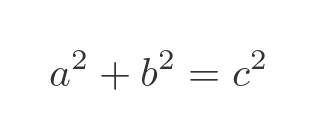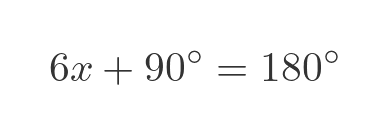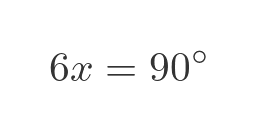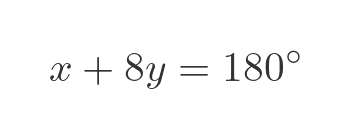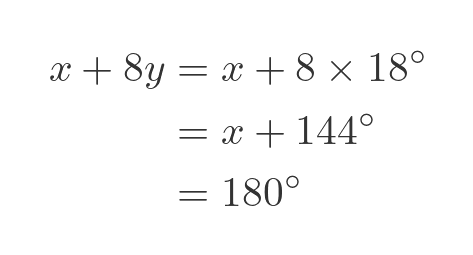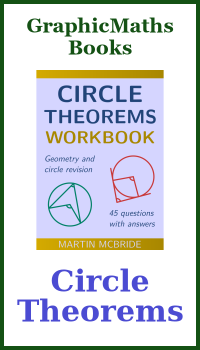Angle in a semicircle is 90°
Categories: gcse geometry circle geometry circle theorems
Level:

The angle in a semicircle theorem is a circle theorem. This article looks at the theorem itself and how it relates to other circle theorems. It includes a proof of the theorem, and there are several exam-style questions and answers at the end.
We can draw a triangle ABC where AB is a diameter of a circle, and C lies on the circumference of the circle:
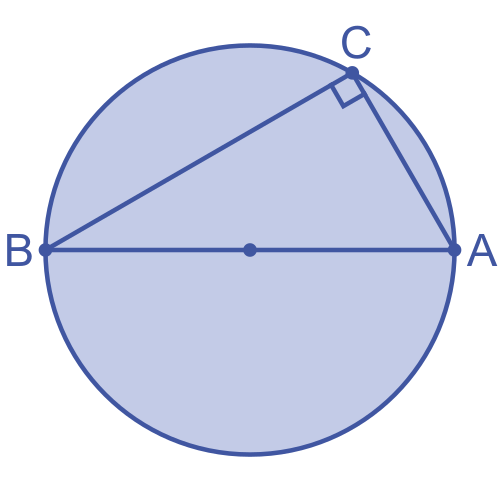
The angle at the circumference C will always be a right angle. We say the angle in a semicircle is a right angle.
Here is a video on this topic:
Relationship to other circle theorems
The angle in same segment theorem says that for any chord AB, every angle in the same segment of that chord is equal:
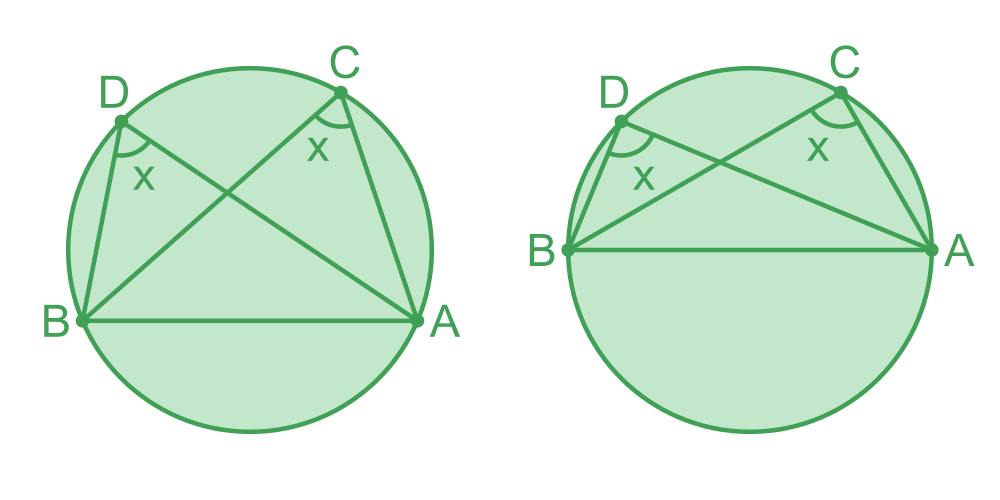
When the angle is in the major segment, it will be an acute angle (that is, less n 90°). This is shown for angle x of the left of the diagram above.
When the angle is in the minor segment, it will be an obtuse angle (that is, greater that 90°). This is shown for angle y in the centre of the diagram.
When AB is a diameter, the segment is a semicircle, which is neither a major segment nor a minor segment. In that case that angle is always 90°, which is the angle in a semicircle theorem. That is shown for angle z on the right if the diagram.
The angle at centre theorem says that the angle formed by a chord at the centre of a circle is twice the angle at the circumference. In the diagram below, the angle at the centre is 2x and the angle at the circumference is x:
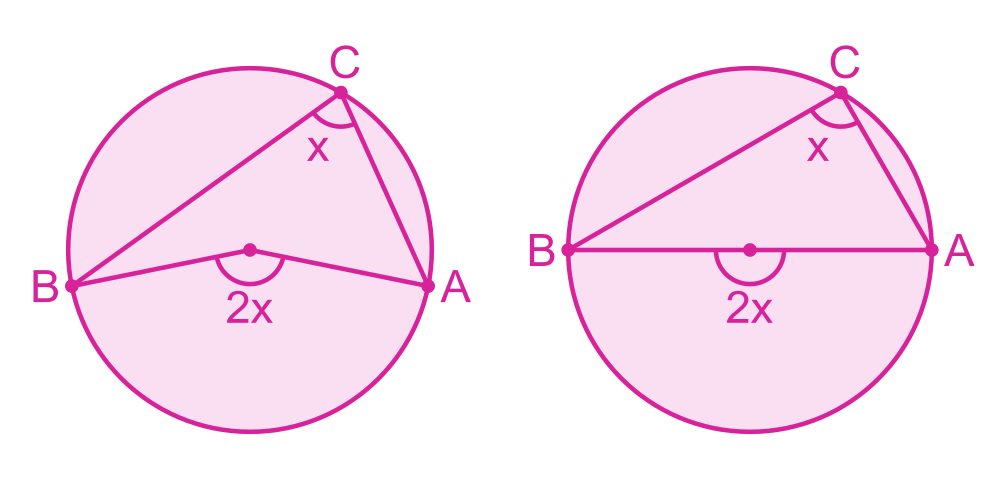
Notice that when AB is a diameter, the angle AOB will be 180°. This means that $x$ will be 90°, which is the angle in a semicircle theorem.
Proof
We can prove this as follows.
We start by drawing an extra line from the centre O to the point C.
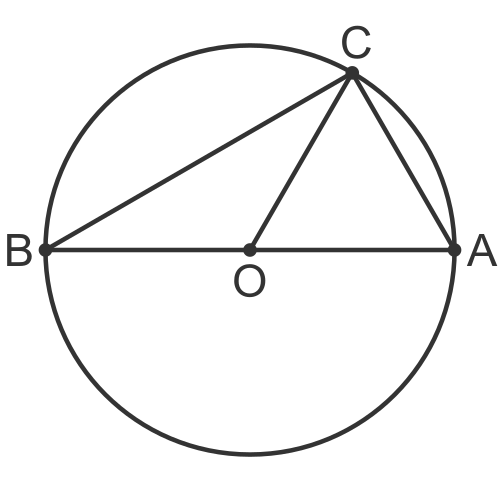
Notice that the lines OA, OB and OC are all radii of the circle, and therefore all of equal length.
Looking at the triangle AOC, this is an isosceles triangle (from the rule 2 radii form an isosceles triangle). So the two angles at the circumference are equal (we will call them a):

By the same logic, the two angles at the circumference in triangle BOC are equal, and we will call them b:
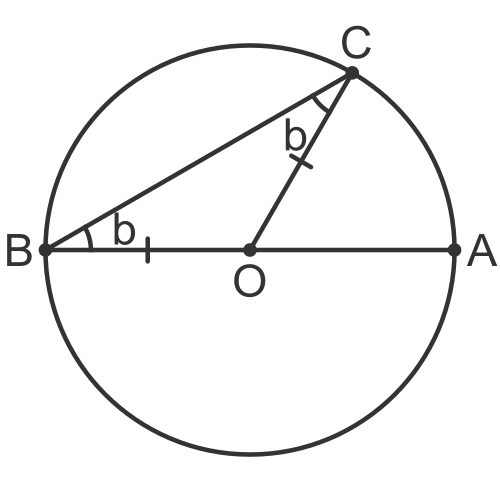
Looking at the original triangle ABC:
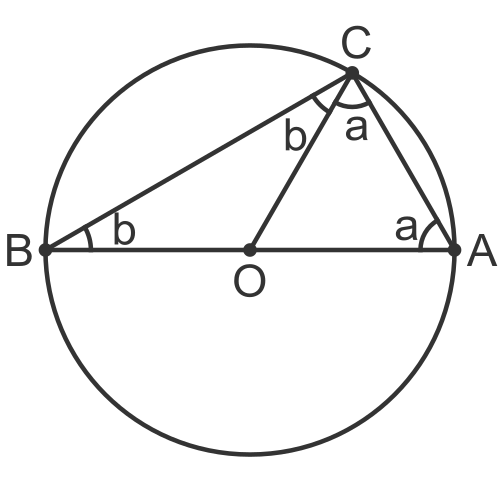
The angle at A is a, the angle at B is b, and the angle at C is a+b. Since the three angles of a triangle add up to 180° we have:

Gathering the terms a and b:
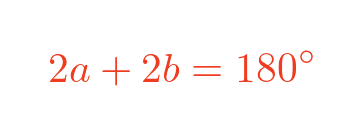
Dividing both sides by 2 gives:
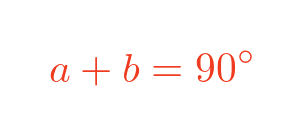
Since the angle at C is a + b, this proves that the angle at C is 90°.
Questions
Here are some exam-style questions on the angle in semicircle theorem. You can click the button at the end of each question to reveal the answer. You can also find worked solutions on the GraphicMaths Youtube channel:
The Circle Theorems Workbook contains additional questions and answers related to circle theorems.
Question 1
The line ST is a diameter of a circle, centre O. Point R is on the circumference of the circle. Angle RTS is 34°:
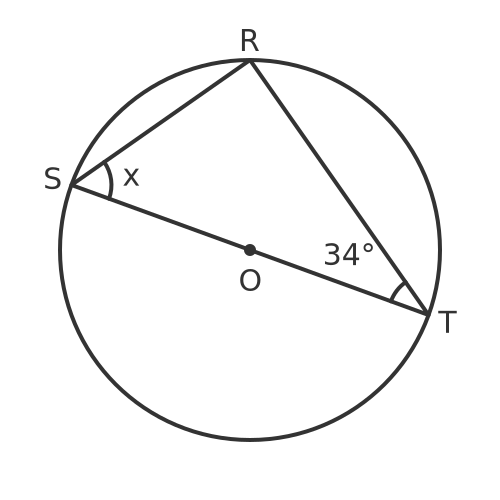
What is angle $x$? Show your working.
Question 2
The circle below has a diameter of 5 and centre O. The line BC is a diameter of the circle. Point A is on the circumference of the circle. The side AB has length 3:
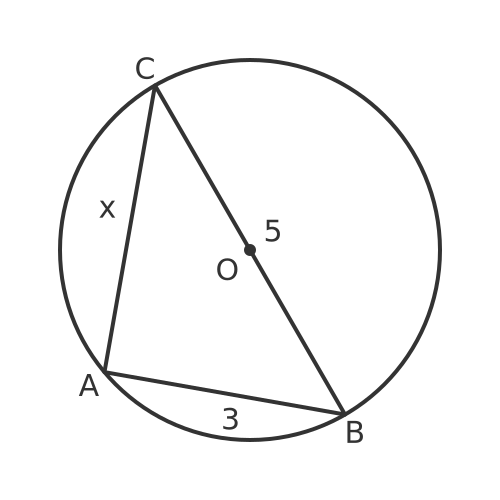
What then length of side AC, marked as $x$? Show your working.
Question 3
The line ST is a diameter of a circle, centre O. Point R is on the circumference of the circle. Angle RTS is $x$ and angle RST is 5x:
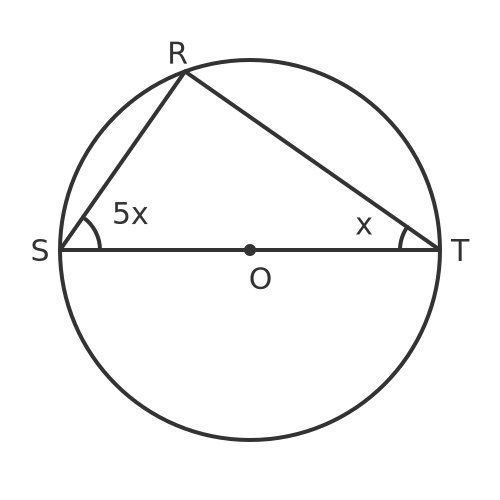
What is $x$? Show your working.
Question 4
The line VW is a diameter of a circle, centre O. Point U is on the circumference of the circle. Angle WUV is $5y$, angle UVW is 3y, and angle UWX is x:
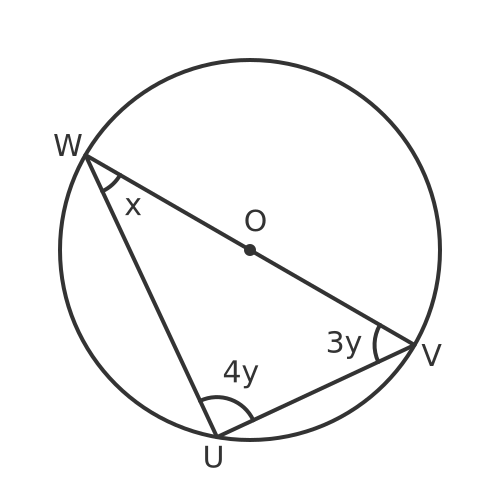
What are $x$ and $y$? Show your working.
Related articles
- Parts of a circle
- Perpendicular bisector of chord theorem
- Angle at the centre of a circle is twice the angle at the circumference
- Angles in the same segment of a circle are equal
- Opposite angles in a cyclic quadrilateral add up to 180°
- Tangent and radius of a circle meet at 90°
- Two tangents from a point have equal length
- Alternate segment theorem
- Two radii form an isosceles triangle
Join the GraphicMaths Newsletter
Sign up using this form to receive an email when new content is added to the graphpicmaths or pythoninformer websites:

Popular tags
adder adjacency matrix alu and gate angle answers area argand diagram binary maths cardioid cartesian equation chain rule chord circle cofactor combinations complex modulus complex numbers complex polygon complex power complex root cosh cosine cosine rule countable cpu cube decagon demorgans law derivative determinant diagonal directrix dodecagon e eigenvalue eigenvector ellipse equilateral triangle erf function euclid euler eulers formula eulers identity exercises exponent exponential exterior angle first principles flip-flop focus gabriels horn galileo gamma function gaussian distribution gradient graph hendecagon heptagon heron hexagon hilbert horizontal hyperbola hyperbolic function hyperbolic functions infinity integration integration by parts integration by substitution interior angle inverse function inverse hyperbolic function inverse matrix irrational irrational number irregular polygon isomorphic graph isosceles trapezium isosceles triangle kite koch curve l system lhopitals rule limit line integral locus logarithm maclaurin series major axis matrix matrix algebra mean minor axis n choose r nand gate net newton raphson method nonagon nor gate normal normal distribution not gate octagon or gate parabola parallelogram parametric equation pentagon perimeter permutation matrix permutations pi pi function polar coordinates polynomial power probability probability distribution product rule proof pythagoras proof quadrilateral questions quotient rule radians radius rectangle regular polygon rhombus root sech segment set set-reset flip-flop simpsons rule sine sine rule sinh slope sloping lines solving equations solving triangles square square root squeeze theorem standard curves standard deviation star polygon statistics straight line graphs surface of revolution symmetry tangent tanh transformation transformations translation trapezium triangle turtle graphics uncountable variance vertical volume volume of revolution xnor gate xor gate


